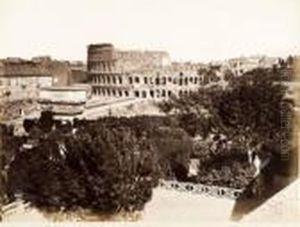Francesco Petagna Paintings
Francesco Petagna was an Italian botanist and clergyman who lived during the 18th century. Born in 1744 in Naples, which was then part of the Kingdom of Naples, Petagna was active during a period that witnessed the flowering of natural sciences, including botany, due to the Enlightenment's emphasis on empirical observation and classification.
Educated within the rich intellectual atmosphere of Naples, Petagna developed an interest in the natural world, particularly in botany. He became a priest, but his vocation did not prevent him from pursuing scientific studies. His clerical status provided him with the means and the time to study plants, which was seen as part of God's creation and thus a worthy pursuit for a man of faith during that era.
Francesco Petagna is best known for his contributions to the classification and description of plant species. His works contributed to the taxonomic system developed by Carl Linnaeus, the Swedish botanist who laid the foundations of modern taxonomy. Petagna’s approach was meticulous, and he described many new species, enriching the botanical knowledge of his time.
One of Petagna's significant contributions to botany was his publication, 'Institutiones Botanicae,' which he released in three volumes from 1787 to 1792. In this work, he described numerous plant species and provided insights into their classification and natural history. His research was not limited to the flora of Italy; he also studied and classified plants from other regions, which were being brought to Europe as a result of global exploration and trade.
Francesco Petagna's work was recognized by his contemporaries, and he was respected as a scholar and botanist. Unfortunately, his name is not as well-known today outside of specialist circles, overshadowed by some of his contemporaries. However, his contributions to the field of botany remain valuable, particularly for those studying the history of science and the development of botanical classification. He passed away in 1810, leaving behind a legacy as a dedicated and meticulous scientist who helped to expand the botanical knowledge of his time.
